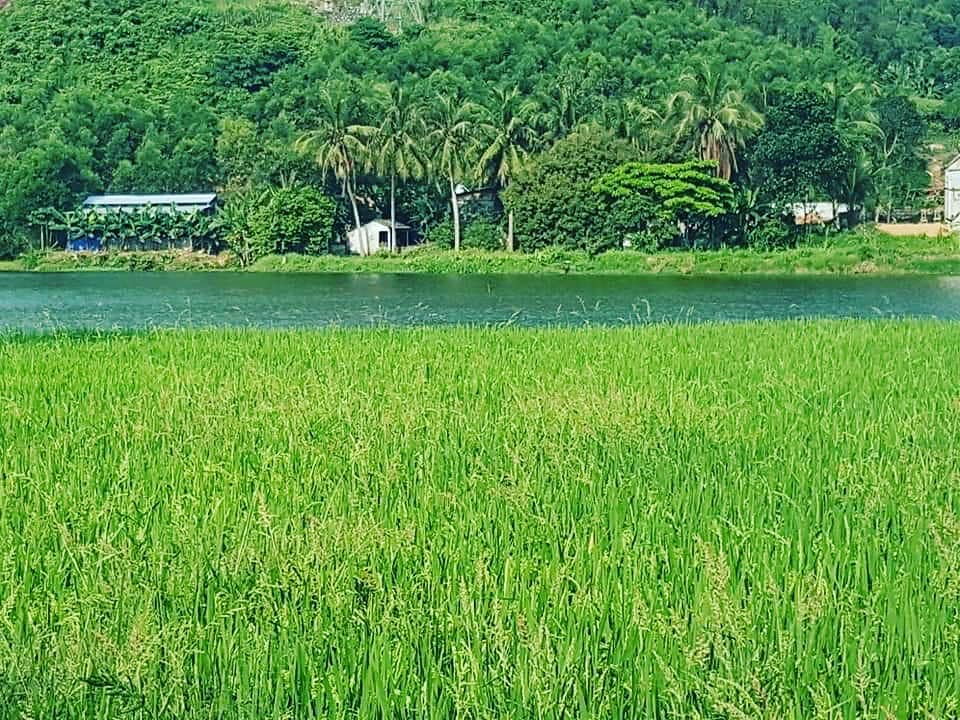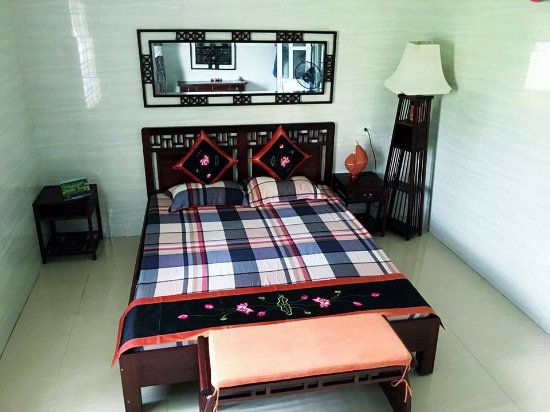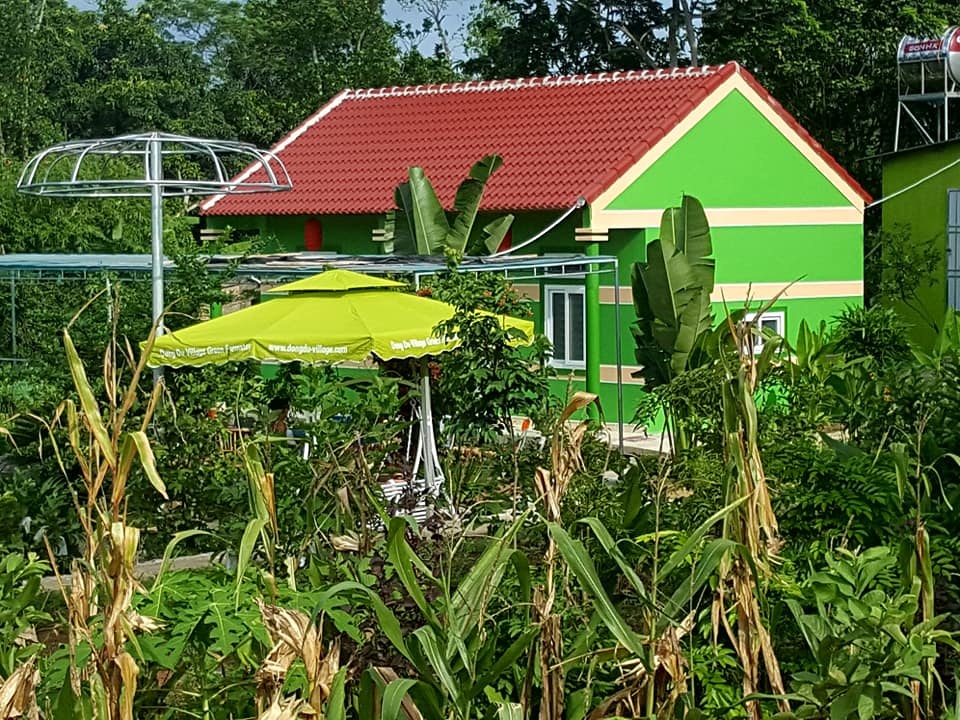Travel Blog
Dong Du Village Lakeside Farmstays
Potential and outlook of eco-tourism in Việt Nam
Updated: 28/6/2018 | 3:25:45 PM
Ecotourism is one of the tourism models that increasingly develop and attract international and domestic customers. It is considered as an effective solution for ecological environmental protection towards sustainable development through the reduction of pressures on natural exploitation, meeting the requirements of tourists and local people while participating in ecotourism.
Ecotourism approach
In recent years, ecotourism is increasingly attracting the interest of tourists, as a type of responsible natural tourism that supports natural environment conservation targets, indigenous cultural values, and community development; at the same time, it brings significant economic benefits, which contributes positively to the tourism development in particular and the socio-economic development in general.
Being aware of the global importance of ecotourism to the effort of natural environment conservation, particularly ecosystems, biodiversity, indigenous cultural values to the socio-economic development in the natural environment context, biodiversity has been suffering impacts caused by human beings through economic development activities and the increasingly severe impacts of climate change, the United Nations decided 2002 to be the International Year of Ecotourism.
In Việt Nam, ecotourism has just been studied to develop as a tourism type since 1990s; however, it has attracted special attention of managers and researchers on tourism and environment as well as tourism enterprises. Due to different levels of awareness, in different angles, currently there are different viewpoints on the concept of ecotourism. However, through time and with the support of international organizations, particularly the International Union for Conservation of Nature (IUCN), the awareness on ecotourism in Việt Nam is initially consistent, accordingly, “ecotourism is a type of tourism that is based on nature and indigenous culture linked with environmental education, which contributes to the efforts of conservation and sustainable development with active participation of the local community”. Tourism is the economic sector that clearly orientates towards natural resources; in other words, tourism is unable to develop without tourism resources. Ecotourism development is not also an exception.
Based on the concept of ecotourism as well as from the practicality of ecotourism development in many countries in the region and in the world, major natural potentials for ecotourism development consist of values of typical ecological landscape, values of biodiversity, particularly unique and rare biological species listed in the international and national Red Book; indigenous cultural values linked with the natural environment such as indigenous knowledge on cultivation methods, production, festivals, traditional activities linked with natural legends…of the local communities. In addition, typical agriculture ecosystems from cultivation activities of local people which are based on indigenous knowledge such as terraced paddy fields in mountainous areas, fruit tree garden in river areas… are usually used to develop some specific ecotourism products.
Of ecotourism resource types, biodiversity plays an important role; the main purpose of tourists is to experience landscape and biodiversity values of the destination. The diversity of species, particularly the presence of unique, rare and threatened species in typical landscape will create significant attractions to tourists. This explains the reason why some countries in Africa, South America such as Kenya, South Africa, Costa Rica, Brazil… where conserve many species in the tropical ecosystem landscape, are always the attractive ecotourism destinations with many tourists from different places in the world.
Potential and outlook of ecotourism in Việt Nam
Located in the monsoonal humid tropical climate, stretching more than 15 latitudes with ¾ areas of mountains, diverse topography, more than 3,200 km of shoreline and the marine zone of more than 1 million km2 which consists of nearly 3,000 islands, Việt Nam has diverse ecosystems including 95 ecosystems belonging to 7 major terrestrial ecosystem types; 39 wetland ecosystems and 20 marine ecosystems. The diversity of ecosystems is the living environment for species and makes Việt Nam to be known as one of the largest 16 biodiversity centres in the world, with nearly 14,000 flora species including 12,000 of higher plants in 3,000 orders and 298 families; nearly 19,000 fauna species including 275 mammals, 828 avian, 180 reptiles, 80 amphibians; 2,470 fish; 400 corals (Scleractinia).
The flora system in Việt Nam has high endemic level; endemic species account for 33% of the total flora species in the North and more than 40% of the total flora species nationwide. Majority of these endemic species focuses in four main regions: Hoang Lien Son high mountain area (the North), Ngoc Linh high mountain area (Central), Lam Vien central highlands (the South) and the tropical rain forests (Northern Central) with many precious timber trees such as gõ đỏ (Afzelia xylocarpa), gụ mật (Sindora siamensis), thông nước (Glyptostrobus pensilis), hoàng đàn (Cupressus torulosa), bách xanh (Calocedrus), pơmu (Fokienia hodginsii)… In 2014, botanist benchmarked with the discovery of the thông năm lá rủ (Pinus cernua ) in Son La.
The fauna system of Việt Nam is not only diverse but also unique and representative for the South East Asia. Similar to the flora system, the fauna system consists of many endemic species, with more than 100 endemic avian species and sub-species, 78 endemic mammal species and sub-species. There are many species having high practical values and many species having high conservation meaning such as: elephant, Việt Nam rhino, banteng, gaur, wild water buffalo, kouprey, brow-antlered deer… Of 25 recognized primate species in Việt Nam, there are 16 endemic species of Việt Nam, 3 sub-species distributes in Việt Nam and Laos, 2 sub-species can only be found in the tropical forest of Việt Nam - Cambodia. The richness on biodiversity and endemic of Vietnam can be seen through 10% of the world’s mammals, birds and fish can be found here, more than 40% flora species are endemic which could not be found anywhere else (local endemic - indigenous species).
According to the assessment of the International Union for Conservation and Nature (IUCN), the Việt Nam fauna system is diverse in terms of species and high level of endemic compared to other countries in Indochina (15/21 primates, 7 endemic mammal species and sub-species, 33/49 bird species). Việt Nam has many world’s new species that have been recently discovered recently such as: sao la (Pseudoryx nghetinhensis), mang lớn (Megamuntiacus vuquangensis), mang Trường Sơn (Muntiacus truongsonensis), bò sừng xoắn (Pseudonovibos spiralis), mang Pù Hoạt (Muntiacus puhoatensis), cầy Tây Nguyên (Viverra tainguensis), cá lá giang (Parazacco fasciatus )… Ecological values, in general, and biodiversity, in particular, focus mainly in the system of 9 biosphere reserves which were recognized by UNESCO; 34 national parks; 58 nature reserves, 14 species conservation, landscape conservation areas.
With the diversity and speciality of ecosystems, biodiversity, indigenous culture values in high ecological value areas are also very diverse and special such as knowledge in terraced paddy rice fields with the way to convey water from river and spring to the field by “water wheel” in high mountainous topography in the North; method of “heightening soil track” for fruit trees in the water lowland areas in the Mekong Delta…; traditional festivals of the ethnic minorities linked with worshipping for fertile seasons… This is a substantial natural resource potential, which contributes to the competitive advantage for ecotourism development in Việt Nam.
Being aware of the importance of ecotourism, the Việt Nam Tourism Development Strategy always identify ecotourism to be a tourism type that is prioritized for development. This orientation plays important roles in tourism developments orientating towards the green economy, which contributes significantly to the sustainable development and response the impacts of climate change in Việt Nam.
(Source: Dong Du Village Lakeside Farmstay)
Other news
- A japanese expert was inspired by natural treasure of Pu Mat National Park, Nghe An
- Enjoy swimming, kayaking or fishing in the Khe Lau lake
- Peaceful vibes and comfortable homestay in Dong Du village
- Les alentours de gite Dong Du
- Decouverte de la campagne verdoyante
- Nghe An’s World Biosphere Reserve Recognized
- Visiting Pu Mat National Park
- Pu Mat National Park, Con Cuong, Nghe An
- GITE RURAL CHEZ THUY FARMSTAY - un charmant hébergement en nature
- Off the beaten paths in Halong Bay & Lan Ha Bay











